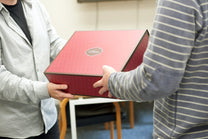Our Journal

One of the unexpected joys of receiving a gift hamper is discovering how useful the basket or box becomes long after the treats have been enjoyed. Our hamper baskets and...
Out of the Box Hamper Storage Basket Ideas
One of the unexpected joys of receiving a gift hamper is discovering how useful the basket or box becomes long after the treats have been enjoyed. Our hamper baskets and...
Read more
Finding the right gift for Dad at Christmas can be challenging, especially when he insists he does not need anything. A Christmas hamper for Dad is a thoughtful way to...
Dad's Christmas Hamper Wishlist
Finding the right gift for Dad at Christmas can be challenging, especially when he insists he does not need anything. A Christmas hamper for Dad is a thoughtful way to...
Read more
If there is one person who deserves to be spoilt at Christmas, it is Mum. Whether she is the organiser of all things festive, the quiet hero keeping everything running...
Mum’s Christmas Hamper Wishlist
If there is one person who deserves to be spoilt at Christmas, it is Mum. Whether she is the organiser of all things festive, the quiet hero keeping everything running...
Read more
Discover why hot chocolate hampers make the perfect comfort gift. From gift sets to Christmas favourites, explore cosy options that everyone will love.
Chocolate
Gift Guide
Hot Chocolate
What Makes a Hot Chocolate Hamper the Ultimate Comfort Gift?
Discover why hot chocolate hampers make the perfect comfort gift. From gift sets to Christmas favourites, explore cosy options that everyone will love.
Read more
Deciding between a cream tea gift hamper and an afternoon tea hamper? Discover the key differences and find the perfect cream tea or afternoon tea gift hamper.
Afternoon Tea
Cream Tea
Guide
What’s the Difference Between a Cream Tea and an Afternoon Tea Hamper?
Deciding between a cream tea gift hamper and an afternoon tea hamper? Discover the key differences and find the perfect cream tea or afternoon tea gift hamper.
Read more
Looking for the right business gift? Discover why wine hampers and wine gift hampers make smart, professional choices for corporate gifting.
Corporate
Gift Guide
Occasion
Are Wine Hampers a Good Corporate Gift?
Looking for the right business gift? Discover why wine hampers and wine gift hampers make smart, professional choices for corporate gifting.
Read more





